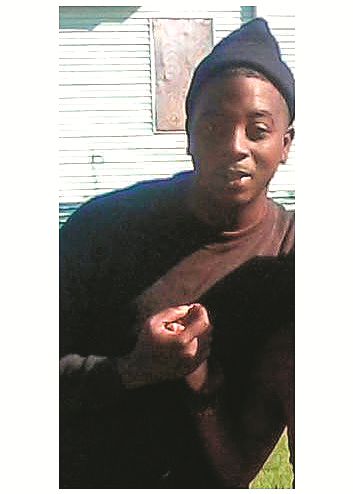
Natasha McKenna was clearly ill but couldn’t get help in Fairfax
9-9-15 Anyone who reads Virginia Commonwealth Attorney Raymond F. Morrogh’s 51 page report about the death of Natasha McKenna, the 37 year old African American woman with schizophrenia who died after being repeatedly stunned with a taser while in the Fairfax County Detention Center, can’t help but be appalled.
For those of us with a loved one with a mental illness, his report is painful and frustrating to read because it shows how difficult it is for someone who is clearly sick in Fairfax County to get meaningful help. Except for one doctor, Lydia Haile, MD., most others named in this report dealt with McKenna poorly, some might say callously.
Morrogh’s report is the first detailed account by an official about what happened to McKenna from January 7 — when she was transported by ambulance to INOVA Alexandria Hospital and showed signs of being psychotic — until her death on February 7th.

Prosecutor Raymond F. Morrogh Relies on Excited Delirium In His Findings
Moorogh concludes that no one is criminally at fault. In fact, he praises the deputies involved. While there may be no legal culpability, the report reveals countless failed opportunities when McKenna could have and should have received help but didn’t.
The most detailed information in Morrogh’s report is about McKenna’s physical altercations with the police and sheriff’s deputies. He gives blow-by-blow, in some times, second-by-second accounts of how McKenna kicked, attempted to bite, and spit at officers. He quotes officers claiming that McKenna had super human strength.
Sergeant Timothy said, “For me it’s probably the most difficult inmate I’ve ever had to deal with in that capacity, male or female… And I’ve dealt with… men on PCP fighting… it’s like she didn’t feel pain…” Deputy Guevarez said, “.. I remember it was … a struggle. I mean.. .I’m not a weak guy but she, she was wearing me out; she was wearing us all out. Deputy Holmes said, “.. .in my 19 years, that was the worst inmate.. .1 have ever dealt with. I’ll be honest with you… she was the real deal. Seriously, she was the worst… the hardest inmate.. .I’ve dealt with big guys, I’ve dealt with other females, smaller guys, guys in gang[s]. She was the toughest person that… I have ever dealt with to get her in that chair and with a struggle.” Deputy Viola said, “[Ms. McKenna was] probably one of the most aggressive CO inmates I’ve ever had to deal with .. .in my experience.” Deputy Barb recalled that, “.. .She was pushing with the most force I’ve seen in the… six years I’ve worked there.. .1 had never seen anybody push like this.. .”
In another sentence, Morrogh quotes an officer stating:
I hate to describe it like this, like a demonic possession because she was growling the whole time.
Because McKenna is dead, there is no one to speak on her behalf about what happened. The deputies’ statements go unchallenged and dovetail perfectly with the conclusion of Dr. Jocelyn Posthumus, M.D., a forensic pathologist with the Office of the Chief Medical Examiner who performed an autopsy on McKenna two days after she died and found that she was not the victim of foul play but of excited delirium, which Morrogh explains thusly:
Most persons suffering from excited delirium are hyper-aggressive, impervious to pain, and demonstrate unusual, “superhuman,” strength. They engage in a lengthy period of struggle, followed by a period of quiet and sudden death.
His conclusion: no one is legally at fault — no one that is, except Natasha McKenna. She brought this all on herself.
How easy it is to blame someone with mental illness. How easy it is to claim that everyone followed the rules except the person who was mentally ill. How easy to cry crocodile tears.
Let’s take a look at Morrogh’s use of the “excited delirium” conclusion of Dr. Posthumus.
Morrogh quotes liberally from a report issued by a task force of the American College of Emergency Physicians that states that excited delirium is real. There’s no mention that excited delirium is not a currently recognized medical or psychiatric diagnosis according to either the Diagnostic and Statistical Manual of Mental Disorders (DSM-IVTR) of the American Psychiatric Association or the International Classification of Diseases (ICD-9) of the World Health Organization.
But here is an even more interesting note: if you check the 2012 and 2013 annual statistical reports issued by the Office of the Chief Medical Examiner in Virginia you will not find a single mention of excited delirium as a cause of death in the state. It is not listed as a cause of any death in Virginia during 2013 in the 128 in-custody deaths that were examined by that office. Not one incident. Nor is it cited in the deaths of 60 persons with mental illnesses who were examined. Not one incident. In the entire 238 page annual report in 2013, there is absolutely no mention of a death in Virginia that was attributed to excited delirium.
As the Washington Post has pointed out repeatedly, nearly all deaths associated to excited delirium happened while the deceased was in police custody, which has caused civil rights activists to claim that it is simply an excuse used to justify excessive force and avoid lawsuits.

 From My Files Friday: Three lessons we could learn from the LGBT Community.
From My Files Friday: Three lessons we could learn from the LGBT Community. 





